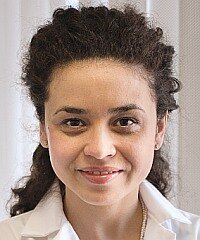International Journal of Periodontics & Restorative Dentistry, 4/2020
DOI: 10.11607/prd.4165, PubMed ID (PMID): 32559045Pages 603-609, Language: EnglishDragan, Irina F. / Garcia H., A. Alejandro / Malik, Raabia / Karimbux, Nadeem Y.The free gingival graft (FGG) has been used predictably for gingival procedures aimed to increase the width of keratinized tissue (KT). Several soft tissue alternatives, such as xenografts and allografts, have been studied and proven to be successful with varying degrees. This pilot clinical case series evaluated the efficacy, safety, and initial clinical outcomes (measuring KT width) of a piscine xenograft material (Omega3 Wound, Kerecis) compared to the FGG (harvested from the patient palate) in correcting mucogingival deformities around teeth. A convenience sample of six subjects with unilateral or bilateral lack of KT were enrolled in the study. The primary objective of this pilot study was to determine the gain in width of KT. Secondary objectives included investigating the probing depth, recession depth, bleeding on probing, and inflammation score. There were three FGG sites and six xenograft sites. In bilateral-site treatments, FGG or piscine xenograft were randomly assigned. For unilateral sites, the piscine xenograft was used. Postoperatively, the patients returned for follow-up at 1, 2, 4, 12, 24, 48, and 52 weeks. All six subjects completed the 12-month study and reported uneventful healing. On average, the xenograft sites had a 3.25-mm gain in KT width, and the FGG had an average gain of 3.67 mm. This pilot clinical series showed the piscine xenograft to be safe and efficacious during healing and to increase the width of KT. Future studies may include a more robust study design with a greater number of subjects.
The International Journal of Oral & Maxillofacial Implants, 6/2014
DOI: 10.11607/jomi.3699, PubMed ID (PMID): 25397804Pages 1412-1424, Language: EnglishUrdaneta, Rainier A. / Seemann, Rudolf / Dragan, Irina-Florentina / Lubelski, William / Leary, Joseph / Chuang, Sung-KiangPurpose: The aim of this study was to evaluate the effect of tooth-implant proximity using an implant system with a double platform shift that was designed to load bone coronal to the implant-abutment interface.
Materials and Methods: A retrospective cohort study was conducted between January 2008 and December 2009. The sample was composed of patients who had received at least one 5-mm-wide hydroxyapatite-coated single-tooth Bicon implant that had been placed adjacent to at least one natural tooth. Descriptive statistics and univariate and multivariate linear mixed-effects regression models, adjusted for multiple implants in the same patient, were utilized. The primary predictor variable was the horizontal distance between implant and adjacent tooth, and the primary outcome variable was the change in periimplant bone levels over time.
Results: Two hundred six subjects who received 235 plateau root-form implants were followed for an average of 42 months. Tooth-implant distance ranged between 0 and 14.6 mm. Out of 235 implants, 43 implants were placed 1 mm to an adjacent natural tooth on mesial and/ or distal sides. The proximity of a plateau root-form implant was not associated with complications on the adjacent tooth such as bone loss, root resorption, endodontic treatment, pain, or extraction. The proximity of an adjacent tooth was not a risk factor for the failure of a plateau root-form implant. After adjusting for other covariates in a multivariate model, the proximity of a natural tooth did not have a statistically significant effect on peri-implant bone levels (P = .13). The extraction of an adjacent tooth was associated with a significant increase in peri-implant bone loss (P = .008).
Conclusion: The placement of a plateau root-form implant with a sloping shoulder in close proximity to an adjacent tooth did not cause damage to that tooth or lead to bone loss or the failure of the implant.
Keywords: adjacent structures, platform switching, retrospective cohort study, single-tooth implants, toothimplant distance




